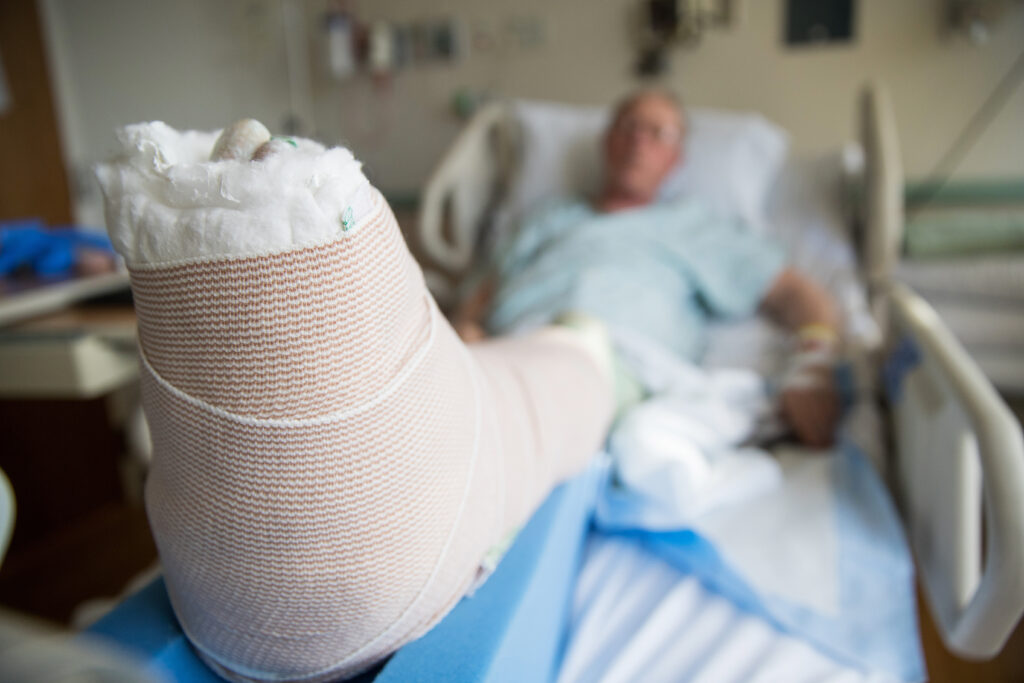
Bone fractures are one of the most commonly reported injuries among accident victims, whether those individuals were involved in a slip and fall accident or a car crash. How these injuries are treated will depend on the type of break in question, how it was caused, and the severity of the damage. Read on to learn more about the types of treatments you could require if you suffer a
bone fracture in an accident.
Immobilizing the Bone
Broken bones are usually able to heal by themselves. Medical treatment, however, is usually necessary to make sure any broken pieces are properly aligned and that the bone can fully recover its strength, sensitivity, and movement. If a break is relatively mild and it is non-displaced, meaning that it didn’t move out of alignment, then a patient may only require a splint or cast to immobilize the bone while it heals. Splinting stops movement of the broken bone and usually lasts for between three and five weeks, while a cast often stays on longer, for between six and eight weeks.
Closed Reduction
Realignment will be necessary for more severe fractures, in which the bones actually moved after breaking. This is a non-surgical procedure, where a doctor physically pushes and pulls on the bones to line them up. This can be extremely painful, so most patients require local anesthetic, sedatives, or even general anesthesia. Once the bones have been realigned, the healthcare provider will likely place the patient’s bone in a splint or a cast to immobilize it.
Surgical Options
The most severe bone fractures require surgical repair, of which there are actually a few different types, including:
- Internal fixation, which involves the surgical realignment of the bones into the correct position and then securing them in place via the insertion of metal pieces, like rods, plates and screws, and pins and wires;
- External fixation, where a surgeon will place screws in the bone on either side of the fracture and then connect those screws to a brace or bracket on the outside of the body, which temporarily stabilizes the fracture prior to internal fixation;
- Arthroplasty, which is often required when a person fractures a joint, such as the shoulder or knee and involves removing the damaged joint and replacing it with an artificial joint made of metal, heavy-duty plastic, or ceramic; and
- Bone grafting, which may be required for a bone that is severely displaced or isn’t healing like it’s supposed to and involves the insertion and fixation of additional bone tissue, either from somewhere else in the body (like the hip), from an external donor, or in the form of an artificial replacement, in the injured area.
Surgical repair is usually the most expensive form of bone fracture treatment, with bills running in the thousands of dollars, even for relatively minor fractures.
Potential Complications
Treating a bone fracture doesn’t guarantee a quick and easy recovery. Many of these procedures are complicated and come with a certain amount of risk, including:
- Acute compartment syndrome, which occurs when there is a build-up of pressure in the muscles that stops blood from getting to the tissues, sometimes causing permanent damage to the nerves and muscles and in severe cases, requiring amputation;
- Malunion, which occurs when two pieces of a broken bone don’t line up properly when they heal;
- Nonunion, which happens when two or more parts of a broken bone don’t grow back together at all;
- Osteomyelitis, or a bone infection, which is much more likely to occur in those with open fractures (when pieces of the broken bone actually pierces the skin); and
- Internal damage, such as injury to the muscles, blood vessels, tendons, ligaments, and nerves.
A lot of these problems can result in long-term issues, like chronic pain, a lack of feeling or mobility, and weakness in the affected area. Many patients, in addition to requiring immediate treatment for their broken bones, must also take part in rehabilitation to strengthen weakened muscles and bones. Fortunately, those who sustained their broken bones in an accident through no fault of their own could be entitled to compensation for these and other related costs. Reach out to our legal team to learn more.
Trial-Tested Personal Injury Lawyers
At Dolan Dobrinsky Rosenblum Bluestein, our experienced Miami personal injury lawyers and dedicated support staff are committed to helping accident victims throughout Florida recover compensation for their accident-related injuries. Call us at 305-371-2692 to get started on your case today.